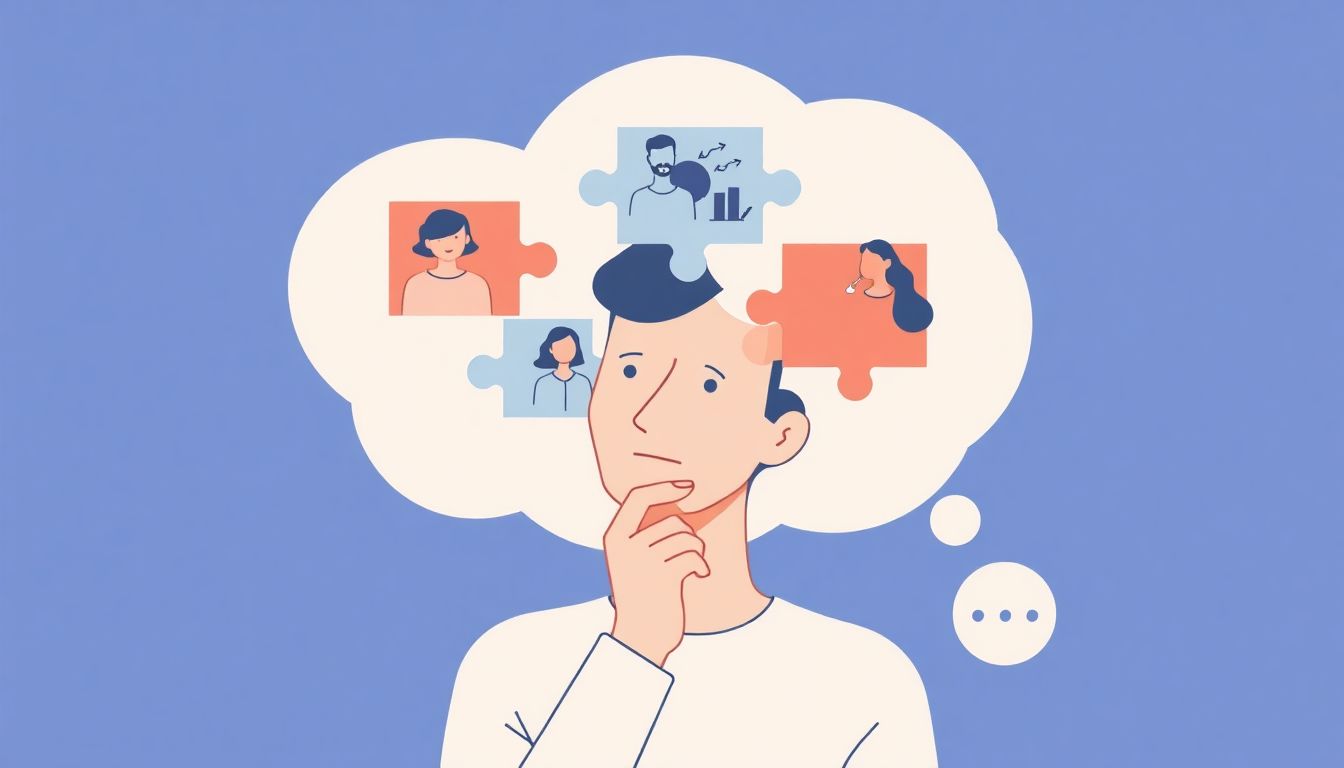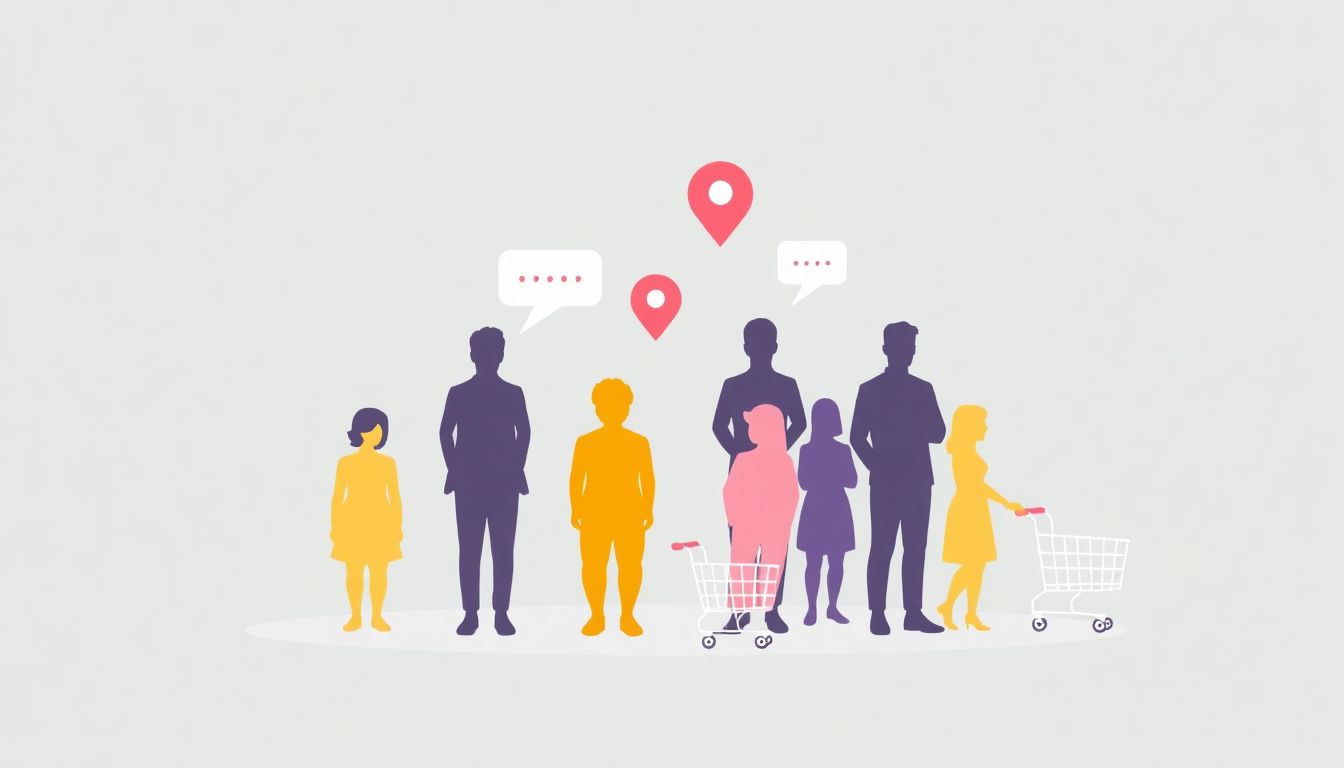Finding your ideal audience can feel tricky—there are countless factors to sort through, and figuring out what makes your customers tick might seem overwhelming.
Fortunately, ChatGPT can make life easier by quickly pinpointing your target audience, helping you group them by interests and demographics, and even crafting clear buyer personas. Stick around, and you’ll soon know exactly how to ask ChatGPT the right questions for precise segmentation.
Ready? Let’s jump in!
Key Takeaways
- Use ChatGPT to quickly identify and segment your target audience based on interests and demographics.
- Clarify your goals, gather customer data, and craft specific prompts for effective segmentation.
- Validate the audience segments generated by ChatGPT to ensure accuracy before implementing them.
- Personalized messages lead to better engagement, conversion rates, and a stronger ROI for your marketing efforts.
- Avoid vague prompts and misconception; clarity and precision in your questions yield better results.
- Apply segmented insights to marketing campaigns to create tailored messaging that resonates with each audience group.

How to Use ChatGPT for Audience Segmentation
ChatGPT audience segmentation is an easy way to divide your customers into meaningful categories based on their characteristics and behaviors.
If you want your marketing messages to actually resonate, you need to talk specifically to the people you’re targeting, not everyone at once.
Here’s the easy step-by-step process you can follow to segment your audience effectively using ChatGPT:
- Clarify Your Goals: First off, clearly define why you’re segmenting your audience—is it for targeted emails, personalized ads, or tailored website content?
- Gather Your Data: Collect any basic info you have about your current or potential customers—like buying behavior, gender, age, and interests.
- Craft Specific ChatGPT Prompts: Enter clear and direct prompts that ask ChatGPT to generate clearly defined audience groups based on the data you provide.
- Validate the Segments: Review the segmentation provided by ChatGPT and tweak results for accuracy before using these segments in your campaigns.
Here’s a simple and practical ChatGPT segmentation prompt you can try right now:
“Segment my audience into groups based on their main motivations for buying eco-friendly skincare products. Provide their primary motivation, concerns, and typical age group.”
Using prompts like this gives you clearly defined audience groups you can immediately target in your next campaign.
Benefits of Identifying Target Audiences with ChatGPT
Segmenting your audience using ChatGPT helps you run effective and targeted campaigns instead of shooting in the dark and hoping something sticks.
Here are the top advantages of audience segmentation with ChatGPT:
- Improved Personalization: When you know exactly who you’re talking to, your messaging feels like it’s made just for them.
- Increased Conversion Rates: Customized messages that match your audience’s preferences naturally lead to better engagement and conversions.
- Cost-Effective Marketing: Why waste marketing budget on generic content? ChatGPT-driven segmentation helps allocate your resources smarter and more efficiently.
- Enhanced Customer Experience: Relevant messaging creates happier customers who engage more deeply with your brand.
- Better ROI: Effective customer segmentation based on relevant criteria makes sure every marketing dollar counts.
If you’re still doubting whether personalized messaging matters, consider checking out how ChatGPT improves targeting for ecommerce businesses or see our tips for crafting attention-grabbing emails with ChatGPT.
Simple ChatGPT Prompts for Audience Segmentation
People love quick, actionable prompts, so here are easy-to-use ChatGPT prompts examples you can copy and paste immediately:
- “Sort my customers into segments based on their frequency of purchase (frequent, occasional, first-time).”
- “Identify segments of buyers based on their interest in budget-friendly vs. premium-priced products.”
- “Group my website visitors based on their browsing behaviors into clear segments (first-time visitors, repeat visitors, product comparison visitors).”
- “Categorize my email list into customer segments based on responsiveness (highly engaged, occasionally engaged, inactive).”
- “Break down my social media followers into primary segments based on the types of content they engage with most (video, text-based, images).”
These beginner-friendly prompts get you started quick and easy, helping you find practical insights without breaking a mental sweat.
ChatGPT Prompts to Understand Customer Behavior and Preferences
Understanding what your customers truly want and why they behave a certain way helps in crafting more effective marketing strategies.
Use these detailed prompts to quickly grasp customer behavior patterns and motivations:
- “Explain common reasons why customers typically abandon their carts when shopping online for tech products.”
- “Outline the buying triggers for parents shopping for educational toys and books.”
- “List the factors that most often influence women’s purchasing decisions when buying makeup products online.”
- “Describe the motivational factors behind customer preferences for sustainable fashion brands.”
- “Give examples of user behavior that indicate high purchase intent when browsing travel booking websites.”
Insights from these prompts help you speak directly to your audience’s specific needs and motivations, making your marketing efforts immediately more relatable and effective.

ChatGPT Prompts to Group Audiences by Demographic Factors
Grouping your audience based on demographic factors like age, location, occupation, or gender helps deliver hyper-targeted messages.
Here are specific, ready-to-use ChatGPT prompts to segment your audience demographics effectively:
- “Divide my customers into segments based on age groups (18-25, 26-35, 36-50, 50+) and outline their main buying behaviors.”
- “Sort website traffic into demographic categories based on location and indicate the type of content each location engages with most frequently.”
- “Group my subscribers according to income levels (low, medium, high) and identify buying patterns typical for each group.”
- “Segment my audience by occupation types (students, employed professionals, entrepreneurs, retirees) and highlight their primary product interests.”
- “Categorize my audience based on gender and outline the most effective types of offers and messaging for each demographic.”
By tapping into demographic insights, your marketing speaks directly to customer’s personal situations, making it more relatable and effective.
ChatGPT Prompts for Creating Buyer Personas
Buyer personas help you visualize your ideal customers, their preferences, behaviors, and lifestyles.
You can create detailed buyer personas quickly using ChatGPT with prompts like these:
- “Create a buyer persona for a mid-30s professional mom interested in sustainable household products. Include her lifestyle, values, buying concerns, and preferred marketing channels.”
- “Outline an ideal buyer persona for recent college graduates looking for affordable travel experiences. Describe their age, motivations, interests, and potential objections to booking travel.”
- “Develop a customer persona for men aged 40-55 interested in fitness and health products. Include typical behaviors, pain points, preferred content types, and best ways to reach them.”
- “Build a detailed buyer persona of tech-savvy teenagers buying gaming gear. Explain their habits, major buying triggers, and platforms they rely on for reviews.”
- “Describe a persona for environmentally-conscious urban millennials. Provide details on their social values, product preferences, typical spending habits, and how they interact with brands.”
Using ChatGPT prompts for buyer personas takes the guesswork out, letting you build targeting strategies that truly resonate with your perfect customer.
Common Mistakes to Avoid with ChatGPT Audience Segmentation Prompts
Audience segmentation with ChatGPT is straightforward, but certain missteps can sabotage your results—so let’s cover these common pitfalls quickly.
- Being Too Vague: Make your prompts crystal clear. Avoid broad prompts like “group my audience by interests,” and state exactly what interests or characteristics you’re referring to.
- Ignoring Validation: Always review ChatGPT-generated segments critically. Check for accuracy and relevance before incorporating them into campaigns.
- Overlooking Context: Ensure the data you’re providing in your prompt actually aligns with the segments you want to see. Misaligned information leads to irrelevant segments.
- Being Overly Complex: Keep prompts specific yet straightforward. Ultra-complicated prompts confuse the model and produce convoluted segments.
- Failing to Act on Insights: Segments are meaningless unless turned into action. Immediately apply your segments to actual marketing campaigns or content strategies to see real benefits.
Staying aware of these common slip-ups helps keep your audience segmentation on target and ensures that your marketing moves the needle.
Examples of Effective Audience Segmentation using ChatGPT Prompts
Seeing concrete examples helps clarify what’s possible when segmenting audiences with ChatGPT.
Here are three practical examples of how businesses effectively segmented their audiences with targeted ChatGPT prompts:
- Ecommerce Fashion Retailer:
Prompt: “Categorize our customers based on buying motivations (comfort, style, affordability), and identify the preferred messaging approach for each group.”
Action: They designed tailored email campaigns highlighting relevant incentives (comfort, fashion trends, deals) according to each type’s motivation, increasing open rates and online sales. - Online Fitness Subscription Service:
Prompt: “Divide subscribers into type of fitness interests (yoga, strength training, weight loss, general fitness) and recommend content types and promotions for each segment.”
Action: By offering personalized plans and dedicated content for each fitness goal, subscribers felt more seen, boosting retention and upgrades. - Local Restaurant Chain:
Prompt: “Segment our audience by meal preference (healthy eaters, families, budget-conscious diners, experiential foodies), and define main values and offers appealing to each segment.”
Action: They ran Facebook ad campaigns customized per segment, promising healthier options, family deals, wallet-friendly specials, or exclusive chef experiences—and saw increased foot traffic and customer loyalty.
These approachable examples show exactly how practical ChatGPT-driven segmentation delivers targeted campaigns with measurable outcomes—making marketing efforts work smarter, not harder.

Tips and Best Practices for ChatGPT-Driven Audience Targeting
ChatGPT-driven audience targeting can significantly boost your marketing, but to keep your approach effective, you’ll need some smart guidelines to follow.
Here are practical tips and best practices to ensure your ChatGPT-driven audience targeting strategies truly hit the mark:
- Start with Clear Objectives: Before crafting prompts, clearly define what you aim to achieve (e.g. increased signups, higher engagement, or sales growth).
- Keep Prompts Specific and Simple: Specific prompts give you usable and accurate results that translate to action. Don’t overload prompts with too many factors at once. For example, prompt: “Segment my audience by preferred vacation style (luxury travel, budget travel, adventure travel), and suggest the top marketing angles for each.”
- Combine Behavioral and Demographic Data: Don’t rely only on demographics—mix behavior and interests. Prompt example: “Segment subscribers based on demographic (age, location) combined with browsing behavior (regular, occasional, and infrequent visitors), highlight their main considerations when purchasing fashion accessories.”
- Validate Segment Results Strategically: Check insights through previous campaign data, reviews, or market research to ensure they’re on point. If segments don’t match your expectations, refine your prompt and run it again.
- Iterate and Improve Regularly: Segmentation is not a one-and-done. Audience motivations change constantly—especially seasonally—so regularly revisit and refresh your segments with updated prompts.
- Test Audiences with Real Campaigns: Try your segments in small targeted campaigns to measure how accurately they reflect actual audience behaviors. Use results to tweak future segmentation prompts.
The key to ChatGPT-driven targeting is ongoing experimentation, validation, and prompt refinements.
Follow these practical tips and you’ll consistently create smarter and more effective marketing efforts, saving yourself from guessing games and ensuring you’re speaking directly—and effectively—to your ideal customers.
FAQs
Audience segmentation is the process of dividing a target audience into smaller groups based on shared characteristics. ChatGPT enhances this by providing tailored suggestions and insights to effectively categorize audiences based on demographics, behaviors, and preferences.
Some effective prompts include: “Define segments for product X based on demographic factors,” or “What behavioral traits can I identify in my target audience for service Y?” These help generate actionable insights for segmentation.
Avoid overly broad or vague prompts, as they can lead to generic responses. Also, don’t overlook refining outputs by providing context or examples. Lastly, remember to validate suggestions with real data.
To create effective buyer personas, use prompts like “Define a buyer persona for a millennial interested in fitness.” ChatGPT can help formulate details like motivations, pain points, and buying behaviors to build comprehensive personas.
